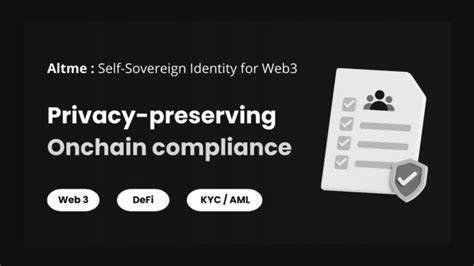- تاریخ انتشار : سه شنبه ۱۶ بهمن ۱۴۰۳ - ۲۱:۰۳
- کد خبر : 790 چاپ خبر
How AI streamlines regulatory compliance for dApps
How AI Simplifies Regulatory Compliance for DApps The rise of decentralized applications (dApps) has ushered in a new era of digital innovation, but it also brings with it a host of regulatory challenges. As blockchain regulations become increasingly complex and the need to maintain compliance increases, developers are turning to artificial intelligence (AI) as a
How AI Simplifies Regulatory Compliance for DApps
The rise of decentralized applications (dApps) has ushered in a new era of digital innovation, but it also brings with it a host of regulatory challenges. As blockchain regulations become increasingly complex and the need to maintain compliance increases, developers are turning to artificial intelligence (AI) as a way to streamline the compliance process.
Regulatory Compliance Challenges for dApps
Regulatory compliance is a critical aspect of dApp development, but it can be a daunting task. A lack of clear guidelines, conflicting regulations across jurisdictions, and the need for adaptability make it difficult to achieve smooth compliance. In addition, the rapid pace of technological advancements in dApp development requires developers to stay abreast of changing regulations.
AI-Powered Compliance Solutions
Artificial intelligence is increasingly being used to simplify regulatory compliance by automating tasks, providing data analytics, and identifying potential risks. Some of the AI-based solutions that have a significant impact on dApps’ regulatory compliance include:
- Data Enrichment Tools
: These tools help identify missing or incomplete data points, ensuring that all necessary information is available for regulatory purposes.
- Risk Scoring: AI-driven risk analytics tools analyze vast amounts of data to identify potential compliance risks and flag them for review.
- Predictive Analytics: Predictive analytics models help anticipate regulatory changes and anticipate potential compliance issues, allowing developers to proactively address issues.
- Automated Reporting: AI-powered automation tools streamline the reporting process and ensure that all required documentation is completed on time and in compliance with regulations.
Benefits of Using AI for Compliance
Using AI for compliance has many benefits, including:
- Time Saving: AI-powered solutions automate routine tasks and allow developers to focus on high-value tasks.
- Higher Accuracy: AI-powered data analytics and risk assessment enable more accurate compliance reporting.
- Augmented Decision Making: AI’s predictive analytics capabilities enable informed decision-making based on real-time data.
- Higher Efficiency

: Compliance automation reduces process complexity and makes it more efficient.
Real-world examples of dApps using AI to achieve regulatory compliance
Several notable dApps have adopted AI-based solutions to streamline the regulatory compliance process. For example:
- Polkadot Governance: Polkadot implemented an AI-driven governance system that automates the onboarding and management of new validators, ensuring seamless compliance.
- Chainlink’s Oracle: Chainlink used oracles to provide real-time data streams to regulators, enabling accurate compliance reporting.
Conclusion
The increasing complexity of blockchain regulations requires developers to adopt AI-based solutions for regulatory compliance. By automating routine tasks, providing data analytics, and identifying potential risks, AI can streamline the process and ensure a minimum level of trust. As the dApp ecosystem continues to evolve, it is essential to stay ahead of AI-powered technologies to overcome regulatory challenges.
لینک کوتاه
برچسب ها
- نظرات ارسال شده توسط شما، پس از تایید توسط مدیران سایت منتشر خواهد شد.
- نظراتی که حاوی تهمت یا افترا باشد منتشر نخواهد شد.
- نظراتی که به غیر از زبان فارسی یا غیر مرتبط با خبر باشد منتشر نخواهد شد.
ارسال نظر شما
مجموع نظرات : 0 در انتظار بررسی : 0 انتشار یافته : 0